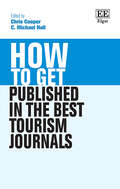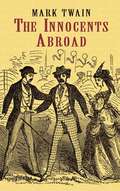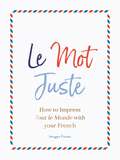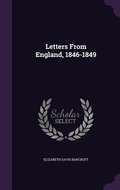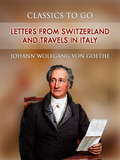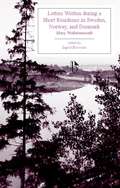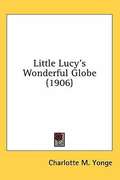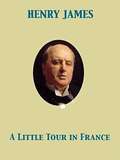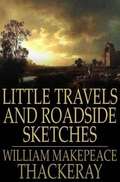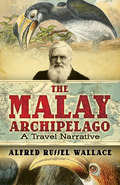- Table View
- List View
How to Get Published in the Best Tourism Journals (How To Guides)
Drawing on a wealth of knowledge and experience from leading tourism academics and journal editors, this practical How To guide offers clear-sighted advice on how to craft a high-quality paper in terms of contribution, positioning and submission. Accessible and comprehensive, it demystifies the process of getting published in the top tourism journals.This insightful book begins by mapping out the tourism publishing landscape, before delving into the various methods of building a refereed journal paper and navigating tourism publishers. Chapters dissect contemporary publishing issues, including gender inequality, ethics and integrity, and the dominance of English language publishing. Finally, contributors outline the essential role of publishing in shaping an academic career in tourism, especially in securing jobs, obtaining grant funding and creating pathways for career progression.How to Get Published in the Best Tourism Journals offers an insider perspective and practical advice while posing questions about the future of tourism publishing in the light of developments such as AI and Open Access. It will prove an essential resource to enhance journal publication success for tourism PhD students, as well as tourism academics at all career stages.
Humans of London
by Cathy Teesdale'A fabulous and much needed testament to how beautiful living with our differences is.' - Emma ThompsonA magical collection of photographs and stories from the iconic streets of London.Capturing the inspiring, the moving, the surreal and the everyday, Cathy Teesdale has made it her mission to celebrate the extraordinary diversity of life found in London. Presenting over 250 photographs, she introduces us to the real people of London, their hopes, philosophies, troubles and stories.Since beginning the Humans of London Facebook page in late 2013, Cathy has travelled across the whole of the Greater London area, photographing and talking to strangers. This collection of personal encounters is the perfect antidote to feeling lost in a big city.
The Innocents Abroad
by Mark TwainHailed by the New York Herald as “an oasis in the desert of works on foreign travel,” The Innocents Abroad was a great success when first published, and it remained the bestselling of all Twain’s works throughout his lifetime. It shows the author at the height of his literary power as he records razor-sharp, often hilarious, observations of the people he meets and places he visits during a trip to Europe and the Holy Land in 1867.Originally a series of travel letters written for a San Francisco newspaper, the book presents a refreshingly honest and vivid view of such places as Tangier, Marseilles, Gibraltar, Rome, Constantinople, and Damascus. Twain’s humor takes a particularly satirical turn toward tourists who rely on travel guidebooks rather than personal impressions to define their travel experiences. The book alternates light-hearted chapters with serious passages involving history, statistics, and descriptions of religious relics, artwork, and architecture.From amusements and tribulations at sea, viewing the “outrageous” cancan in Paris, and witnessing the notable sights of Venice, to observing the grandeur of St. Peter’s, ascending Vesuvius, and contemplating the remains of Solomon’s Temple, this classic will delight a wide audience, including longtime fans of the American humorist and anyone who enjoys an entertaining and enlightening travel book. This edition also includes all the illustrations from the original publication.
International Space Station (Large Print)
This is an image of the ISS, a very large man-made satellite orbiting the Earth at a height of 350 kilometres. There is a locator dot shown, which will be at the top left of the page when the image is the right way up. The station is used mainly for scientific research and although originally built by Russia and America, it is now manned by representatives of fourteen nations. In the centre of the page are the modules used for living and scientific research. These are attached one to another and reach the top of the page with the topmost one used as a dock for the Space Shuttle. Two rectangular solar panels extend out to the left and right of the modules. Down the page from these is the main truss running across the page. This supports two much larger panels on the far left and right of the page. Just to the left of centre, on the main truss, there is the mobile servicing system, which runs on rails, has two robot arms and is used for various construction and servicing tasks. To give an idea of the size of the structure, a scale image of a person in a space suit (approximately 6 mm high) is shown at the top centre of the page, just to the left of the research modules. The space station is constantly being changed and added to, so this diagram can only give an approximate impression of its layout.
International Space Station (UEB Contracted)
This is an image of the ISS, a very large man-made satellite orbiting the Earth at a height of 350 kilometres. There is a locator dot shown, which will be at the top left of the page when the image is the right way up. The station is used mainly for scientific research and although originally built by Russia and America, it is now manned by representatives of fourteen nations. In the centre of the page are the modules used for living and scientific research. These are attached one to another and reach the top of the page with the topmost one used as a dock for the Space Shuttle. Two rectangular solar panels extend out to the left and right of the modules. Down the page from these is the main truss running across the page. This supports two much larger panels on the far left and right of the page. Just to the left of centre, on the main truss, there is the mobile servicing system, which runs on rails, has two robot arms and is used for various construction and servicing tasks. To give an idea of the size of the structure, a scale image of a person in a space suit (approximately 6 mm high) is shown at the top centre of the page, just to the left of the research modules. The space station is constantly being changed and added to, so this diagram can only give an approximate impression of its layout.
International Space Station (UEB Uncontracted)
This is an image of the ISS, a very large man-made satellite orbiting the Earth at a height of 350 kilometres. There is a locator dot shown, which will be at the top left of the page when the image is the right way up. The station is used mainly for scientific research and although originally built by Russia and America, it is now manned by representatives of fourteen nations. In the centre of the page are the modules used for living and scientific research. These are attached one to another and reach the top of the page with the topmost one used as a dock for the Space Shuttle. Two rectangular solar panels extend out to the left and right of the modules. Down the page from these is the main truss running across the page. This supports two much larger panels on the far left and right of the page. Just to the left of centre, on the main truss, there is the mobile servicing system, which runs on rails, has two robot arms and is used for various construction and servicing tasks. To give an idea of the size of the structure, a scale image of a person in a space suit (approximately 6 mm high) is shown at the top centre of the page, just to the left of the research modules. The space station is constantly being changed and added to, so this diagram can only give an approximate impression of its layout.
Le Mot Juste: How to Impress Tout le Monde with Your French
by Imogen Fortes'Charming, witty and cheerful, this is a delectable feast of the French language. Allez le Bleus!' Raymond BlancCelebrating the art of the French language with a charming collection of words and phrases to bring into everyday conversation. C’est parti!Have you ever wondered exactly what déjà vu is? Have you made a faux pas? Eaten an hors d’oeuvre? Voulez-vous an explanation of the above? Then voilà, here is a collection of les bons mots so you can start to learn that certain je ne sais quoi of the French language. Le Mot Juste contains 150 beautiful words and phrases that you’ll love to say every day.
Letters from England, 1846-1849
by Elizabeth Davis BancroftElizabeth Davis Bancroft (1803 - 1886) was born in Plymouth,Massachusetts. She was the wife of the famous American historian and statesman George Bancroft (1800 - 1891). Bancroft is most famous for the letters she wrote to family members from England. Though these letters were not intended for publication, because of the exuberance and the clarity of Bancroft’s depiction of Victorian social life in London, they were published as Letters from England (1846 - 1849).
Letters from Switzerland and Travels in Italy (Classics To Go)
by Johann Wolfgang von GoetheShort excerpt: "Were, then, these Switzers free? Free, these opulent burghers in their little pent-up towns—free, those poor devils on their rocks and crags? What is it that man cannot be made to believe, especially when he cherishes in his heart the memory of some old tale of marvel? Once, forsooth, they did break a tyrant's yoke, and might for the moment fancy themselves free; but out of the carcase of the single oppressor the good sun, by a strange new birth, has hatched a swarm of petty tyrants. And so now they are ever telling that old tale of marvel: one hears it till one is sick of it. They formerly made themselves free, and have ever since remained free! and now they sit behind their walls, hugging themselves with their customs and laws—their philandering and philistering. And there, too, on the rocks, it is surely fine to talk of liberty, when for six months of the year they, like the marmot, are bound hand and foot by the snow."
Letters Written During a Short Residence in Sweden, Norway, and Denmark
by Mary Wollstonecraft"The art of travelling is only a branch of the art of thinking," Mary Wollstonecraft wrote in one of her many reviews of works of travel writing. A Short Residenceis her own travel memoir. In a series of letters addressed to an unnamed lover, the work narrates Wollstonecraft's journey through Scandinavia in 1795, on much of which she was accompanied by her infant daughter. Passionate and personal, A Short Residenceis at once a moving epistolary travel narrative, a politically-motivated ethnographic tract, a work of scenic tourism, and a sentimental journey. It is both as much a work of political thought as Wollstonecraft's better known treatises, and a brilliant, innovative, and influential work in the genre. This Broadview edition provides a helpful introduction and extensive appendices that contextualize this remarkable text in relation to key political and aesthetic debates. It also includes a significant selection from Wollstonecraft's travel reviews.
Lifeboat (Large Print)
The lifeboat is viewed from the side with its front or bow on the left of the page and the rear or stern on the right. There is a locator dot shown, which will be at the top left of the page when the image is the right way up. The lifeboat has two sections; the bottom section is the hull which would be in the water and the upper section is the cabin superstructure. Where these sections meet is the deck, which has handrails running along its entire length except for two gaps, one in the middle and one near the stern. These gaps are where the crew step aboard. In the middle of the cabin superstructure there are two rows of windows. The captain's bridge has one of its windows on the left of the upper row of five windows. Up from the windows is the boat's navigation light and then the lookout station. Two tall aerials stick up at the front and back of the lookout station, with the radar supported on two poles between them. Hand railings run to the right of the lookout station and down to the stern.
Lifeboat (UEB Contracted)
The lifeboat is viewed from the side with its front or bow on the left of the page and the rear or stern on the right. There is a locator dot shown, which will be at the top left of the page when the image is the right way up. The lifeboat has two sections; the bottom section is the hull which would be in the water and the upper section is the cabin superstructure. Where these sections meet is the deck, which has handrails running along its entire length except for two gaps, one in the middle and one near the stern. These gaps are where the crew step aboard. In the middle of the cabin superstructure there are two rows of windows. The captain's bridge has one of its windows on the left of the upper row of five windows. Up from the windows is the boat's navigation light and then the lookout station. Two tall aerials stick up at the front and back of the lookout station, with the radar supported on two poles between them. Hand railings run to the right of the lookout station and down to the stern.
Lifeboat (UEB uncontracted)
The lifeboat is viewed from the side with its front or bow on the left of the page and the rear or stern on the right. There is a locator dot shown, which will be at the top left of the page when the image is the right way up. The lifeboat has two sections; the bottom section is the hull which would be in the water and the upper section is the cabin superstructure. Where these sections meet is the deck, which has handrails running along its entire length except for two gaps, one in the middle and one near the stern. These gaps are where the crew step aboard. In the middle of the cabin superstructure there are two rows of windows. The captain's bridge has one of its windows on the left of the upper row of five windows. Up from the windows is the boat's navigation light and then the lookout station. Two tall aerials stick up at the front and back of the lookout station, with the radar supported on two poles between them. Hand railings run to the right of the lookout station and down to the stern.
A Little Tour in France
by Henry JamesI am ashamed to begin with saying that Touraine is the garden of France; that remark has long ago lost its bloom. The town of Tours, however, has some thing sweet and bright, which suggests that it is sur- rounded by a land of fruits. <P> <P> It is a very agreeable little city; few towns of its size are more ripe, more complete, or, I should suppose, in better humor with themselves and less disposed to envy the responsibili- ties of bigger places. It is truly the capital of its smil- ing province; a region of easy abundance, of good living, of genial, comfortable, optimistic, rather indolent opinions. Balzac says in one of his tales that the real Tourangeau will not make an effort, or displace him- self even, to go in search of a pleasure; and it is not difficult to understand the sources of this amiable cynicism. He must have a vague conviction that he can only lose by almost any change. Fortune has been kind to him: he lives in a temperate, reasonable, sociable climate, on the banks, of a river which, it is true, sometimes floods the country around it, but of which the ravages appear to be so easily repaired that its aggressions may perhaps be regarded (in a region where so many good things are certain) merely as an occasion for healthy suspense.
Little Travels and Roadside Sketches
by William Makepeace ThackerayThough William Makepeace Thackeray eventually gained fame for picaresque and satirical novels such as Vanity Fair and The Luck of Barry Lyndon, he was also a prolific travel writer and essayist. This collection presents an array of Thackeray's most beloved travel essays and observations.
Lorry (Large Print)
This lorry is shown from the side. There is a locator dot shown, which will be at the top left of the page when the image is the right way up. The front of the lorry is on the left of the page, and the rear of the lorry is on the right. The driver's cab, at the front of the lorry, has a small bumper sticking out in the bottom. The cab is mainly taken up by a door, which has a window and a door handle. Behind the driver's cab is the large, enclosed trailer. In the middle, there is a long rectangular panel on which a company sign or advert can be displayed. Underneath the lorry three wheels are shown - one under the cab and the others under the trailer.
The Malay Archipelago: A Travel Narrative
by Alfred Russel WallaceWritten by a famed 19th-century scientist who laid the groundwork for much of modern biology, this influential work remains one of the great classics of natural history and travel. Detailing his eight-year exploration of the Malay Archipelago, Wallace offers observations of the native people of the island groupings, the abundant and strange animals and insects, and more.
